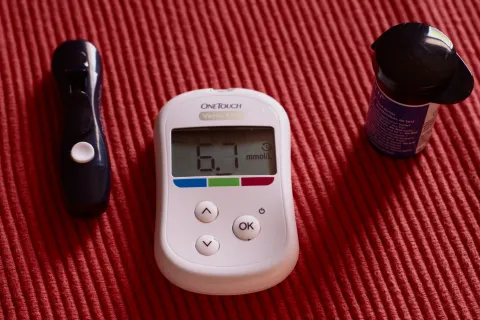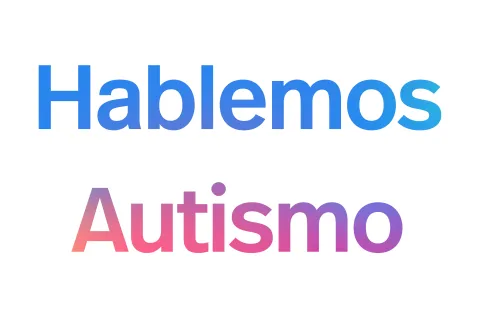Signs that a nonverbal autistic child may need glasses
By Dr. Bradley DavittToday’s response is from ophthalmologist Bradley Davitt, director of pediatric ophthalmology at SSM Cardinal Glennon Children’s Medical Center and a researcher at Saint Louis University’s School of Medicine. The medical center and school are both part of the Autism Speaks Autism Treatment Network (ATN).
Our teenage son is nonverbal and has autism. He’s always putting on his sister’s glasses. We’re wondering if it’s because he needs glasses too. How do we know? He can’t tell us. He certainly can’t read off the letters on a vision chart.
Thank you for your question. It’s an important one. At our center, we make it standard practice to encourage vision exams for every child diagnosed with autism. This is particularly important when a child – or adult – on the spectrum can’t communicate verbally.
I recall one child who had pediatric cataracts. After the cataracts were treated, his behavior improved so dramatically that we wondered whether his autism diagnosis remained appropriate. This was a wake-up call that led to our doing a review of our medical records. Of 407 children diagnosed with autism or a related developmental disorder between 1998 and 2006, 154 had received a comprehensive eye exam by one of our pediatric ophthalmologists. Forty percent of those screened needed vision correction or had other eye problems needing medical treatment. We published the results of our study in the Journal of Autism and Developmental Disorders.
I’d like to use this opportunity to urge all parents and healthcare providers to ensure that children with autism receive comprehensive vision exams.
The nonverbal autism eye exam
So how do we perform a vision screening with a nonverbal child? We have a number of effective approaches.
Sometimes children who can’t respond verbally will play a matching game. We ask them to match pictures, letters or numbers on a card held near to them with corresponding images at the back of the room. This can help us screen for refractive errors. Refractive errors such as nearsightedness, farsightedness and astigmatism produce the kind of blurred vision that we correct with glasses.
Another highly effective test – that requires no response from the patient – is called cycloplegic retinoscopy. “Cycloplegic” refers to relaxing the eye’s focusing mechanism with ophthalmic drops. “Retinoscopy” refers to the use of a handheld instrument to look into the dilated eye and measure how the eye refracts light. Here is how an autism eye exam unfolds:
- In the examining room, an assistant dims the lights and instills eye drops that dilate the pupils and relax the eye’s focusing mechanism. Before instilling the drops, the assistant should explain that the drops may sting a bit and will make vision blurry, particularly at near distances. Typically it takes about 30 minutes for the drops to take full effect.
- The ophthalmologist then sits in front of the patient and asks him or her to look at an object – perhaps a toy or picture – behind the doctor. If needed, a parent or office staff member may hold the child during this test.
- The doctor explains that he or she will shine a light in each of the patient’s eyes. The doctor does this in a crisscross pattern using the retinoscope.
- During this process, the doctor switches between different lenses to see what type of vision correction, if any, is needed.
Alternately, if your child is comfortable with it, we can perform vision exams using a computer-controlled machine called an autorefractor. The patient sits in front of the device, with his or her chin on a rest, and one eye at a time, looks into the machine at a picture inside. The picture appears to move in and out of focus as the machine takes readings to determine when the image is properly focused on the back of the eye. Again, no verbal feedback is needed from the patient. Unfortunately, many children on the spectrum are fearful of getting close to the machine. In these cases, we don’t want to push it.
Learn more in the Autism Speaks Vision Exams for Individuals with Autism Tool Kit.
Signs that your child may need glasses
As I mentioned, we encourage all parents of children with autism to bring them in for a comprehensive eye exam regardless of whether their child shows signs of needing vision correction.
Still, we understand that it’s often a sign or signs of a problem that prompts the visit. You mentioned that your son likes to wear his sister’s glasses. That might be a sign. It’s hard to tell.
Other common signs of vision problems include frequent squinting and getting close to objects or holding them close when looking at them. Some people with poor vision are frequently startled by nearby objects – a possible sign that they didn’t initially see the objects. Light sensitivity is another sign that deserves evaluation, though sometimes it relates to sensory issues.
Where to get a nonverbal eye exam?
Pediatric ophthalmologists receive training on how to perform eye exams on nonverbal patients, including infants and toddlers. If possible, it would be wonderful to take your son to a specialist who is comfortable and experienced in working with those who have autism. Autism specialty care clinics – such as those in the Autism Speaks ATN – are a good place to find such a specialist or get a referral to one in your community. Find the Autism Speaks ATN nearest you or use the Autism Speaks Resource Guide to find providers in your area.
Preparing your child
Parents know their children best. I encourage them to think about how much or how little they want to share with their child before an exam. Definitely let your child know that he won’t be receiving any "shots" when he comes to the eye doctor.
You may want to explain that your son will receive eye drops that will temporarily blur his vision.
Some parents tell me they’re skeptical that their child with autism will tolerate glasses even if we find a significant need for vision correction. I respond that their children might surprise them. In my experience, patients of all ages and developmental levels share a tremendous drive to see clearly. The joy of seeing clearly often overrides any sensory aversion to wearing glasses. At the same time, I encourage families to find the most comfortable frames possible for their loved one. In addition, behavioral and occupational therapists can help the individual get more comfortable with wearing glasses.
Advice for eye doctors
If your community doesn’t have an eye doctor experienced in working with patients who have autism, I’m glad to offer a few tips for you to share:
- I don’t enter the room until after my assistant has instilled the dilating drops. They don’t sting that much, but they can be a little uncomfortable, and I don’t want to lose the patient’s trust.
- I find it helpful to speak calmly as I enter the room. I don’t directly approach the child and try to avoid touching the child when doing the exam.
- At the same time, a warm and friendly atmosphere is extremely helpful. I stock our exam room with toys and other objects that will engage a child’s attention. I observe which of these objects interests the patient and then use this object as the “fixation target” during my vision exam. I often use something that the child brought from home – for example an iPad with a favorite game.
Thank you again for your question. I hope my answer proved helpful.
Editor’s note: The above information is not meant to diagnose or treat and should not take the place of personal consultation, as appropriate, with a qualified healthcare professional.











